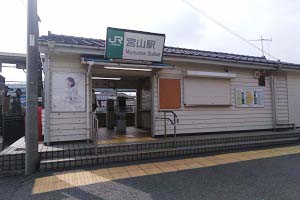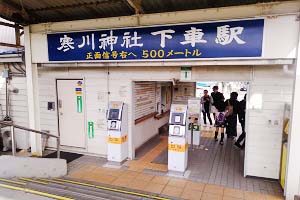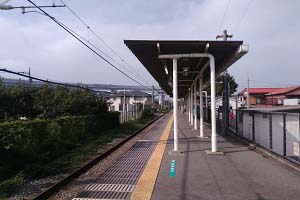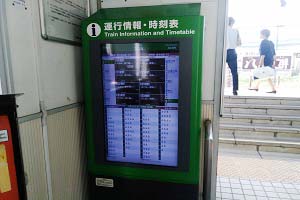Ebina-Samukawa bus
This time, I rode on a bus line connecting Ebina station in Ebina City, Kanagawa Prefecture, to Samukawa station in Samukawa Town, Kanagawa Prefecture. In the examples post on this site, it is the closest line to our school (Keio University Shonan Fujisawa middle and high school).
With this route in mind, I also thought about traffic improvement in this area while also including a ride report on the JR Sagami Line that runs nearby.
Route data · History of appearance
This Ebina ~ Sakawa Railway line is a route that Sotetsu bus and Kanagawa Chuo Kotsu (following, Kanachu) operate together. At first, it was a line of demonstration operation.
In October 2014, demonstration operation began led by local governments (Ebina City / Samukawa Town).
According to the Samukawa-cho homepage, "This is a demonstration operation to verify using circumstance about a route bus which connects Samukawa station and Ebina station. Also, this demonstration operation aims to solve each problems about Samukawa Town which wants to maintain broad public transportation network and improve the quality of residents’ life. Then, Ebina City which needs alternative idea about community bus(Hongou route)".
It can be said that it is a demonstration operation that both local governments have merit and can expect flow among local governments. Also, it is an unusual example to open a route as a general route bus instead of a community bus operated by two municipalities.
In addition, they could have improved the inconvenient situation as mentioned in the section on "Route change" by carrying out transit between each local governments in a linear route.
After that, certain using was permitted so the demonstration operation repeated the extension. In April 2017, they started full-scale service as a general route bus.
Ride report
Ebina station
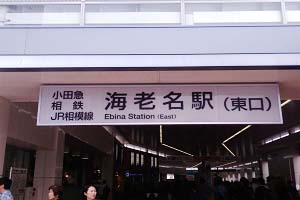 On September 16, 2018 (Sunday), I visited Ebina station at first. Around Ebina station is a remarkably developed city in recent years because there are commercial facilities such as "Bina Walk" and "LaLaport Ebina".
On September 16, 2018 (Sunday), I visited Ebina station at first. Around Ebina station is a remarkably developed city in recent years because there are commercial facilities such as "Bina Walk" and "LaLaport Ebina".
At the time I researched in advance, I was planning to arrive at Ebina station at just the right time to leave the bus. However, when I thought that the bus did not arrive, I found that I was watching weekday operation schedule.
Although I was shocked, the next bus was an hour later, so I took the JR Sagami Line connecting from Ebina station to Samukawa station and decided to go to Samukawa Town.
JR Sagami Line
The JR Sagami Line is a 4-car train, and during the day it is about 3 routes in an hour. Opening and closing the door was button type in all station and it was rare single line in Kanagawa Prefecture.
As I asked friends who used it in the expedition of club activities about Sagami line, he answered that it was quite "local railway". Therefore, it can be said that it is a local route from the sense of residents live in Kanagawa prefecture and other lines in the prefecture.
I got on to Miyayama station. It was a ride rate that seats were not just filled up. Even when I am normally ride on the Sagami line, it is such a boarding situation. It is not too empty or crowded route so that there is no possibility that this route does not get enough profit.
As Sagami Line is a single track as described above, there are stations that stopping for several minutes due to dissonance. Therefore, Sagami line will take longer time.
I got on the train for about 20 minutes and arrived at Miyayama station. This station is the nearest station of Sawamura Shrine as you can see from the photo. Samukawa Shrine is a famous shrine in Kanagawa Prefecture. The beginning of the New Year's visit is crowded with many people. There is not much demand usually, but New Year has strong demand.
There is a bicycle parking in front of the station. It seems that how to move such as riding a bicycle, parking at the station and going out on a train is also active. Bicycle parking space is free and there is enough parking space.
Also, there was a bus stop of the Samukawa Town community bus on a road which is in front of the station. By combining multiple routes, the number of bus line is kept unexpectedly, and I thought that it was a range can be said to be a useful transportation system.
There was a bus stop in the direction of Samukawa Shrine, so I walked to Samukawa shrine. Like the photo, the roads in this area are not crowded, so it can say that the road condition is good. You also might be able to move without stress when you drive a car.
I walked for about 6 minutes and arrived at Samukawa shrine. There was a bus stop in the approach of Samukawa shrine. The distance is shorter by using a bus.
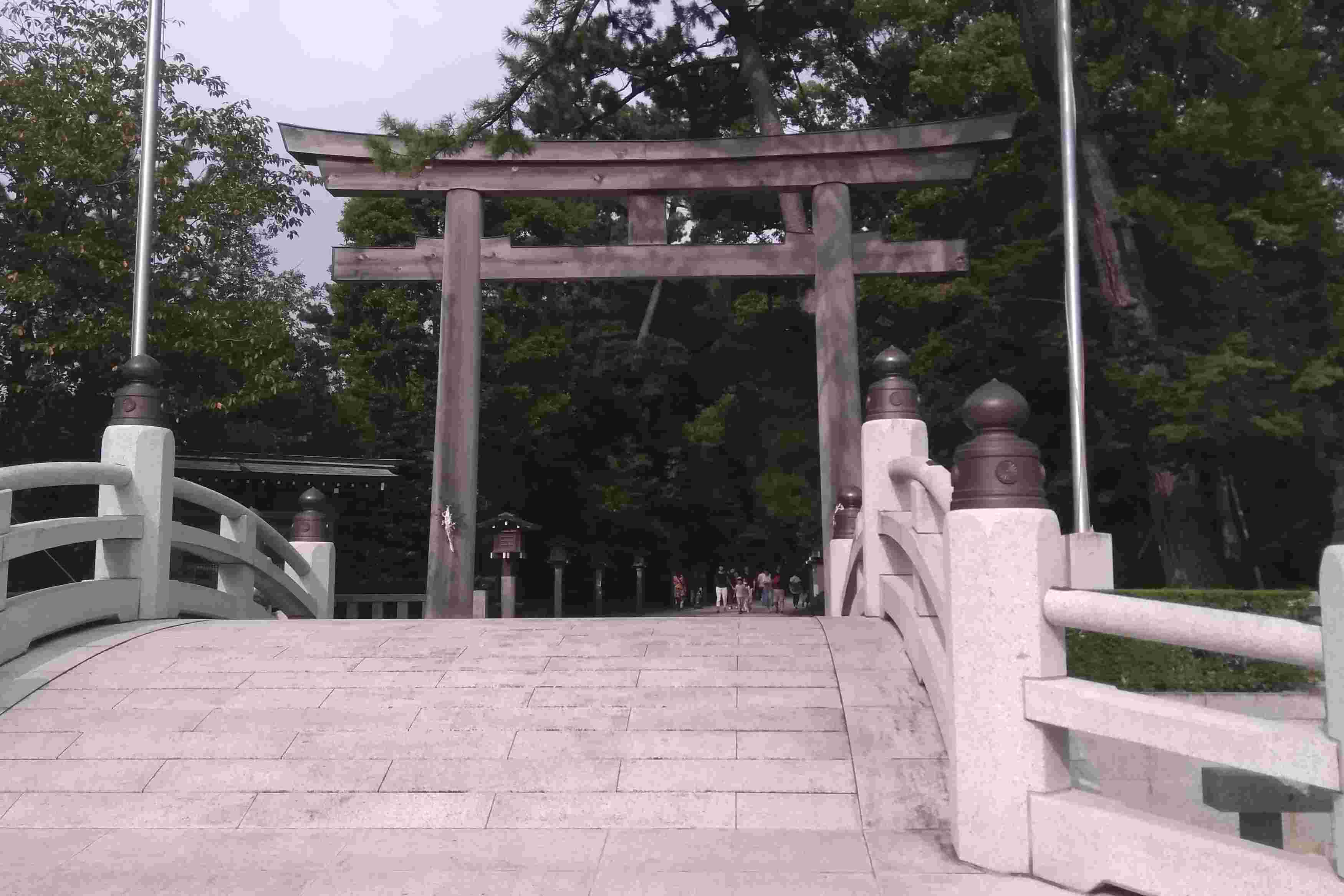
|
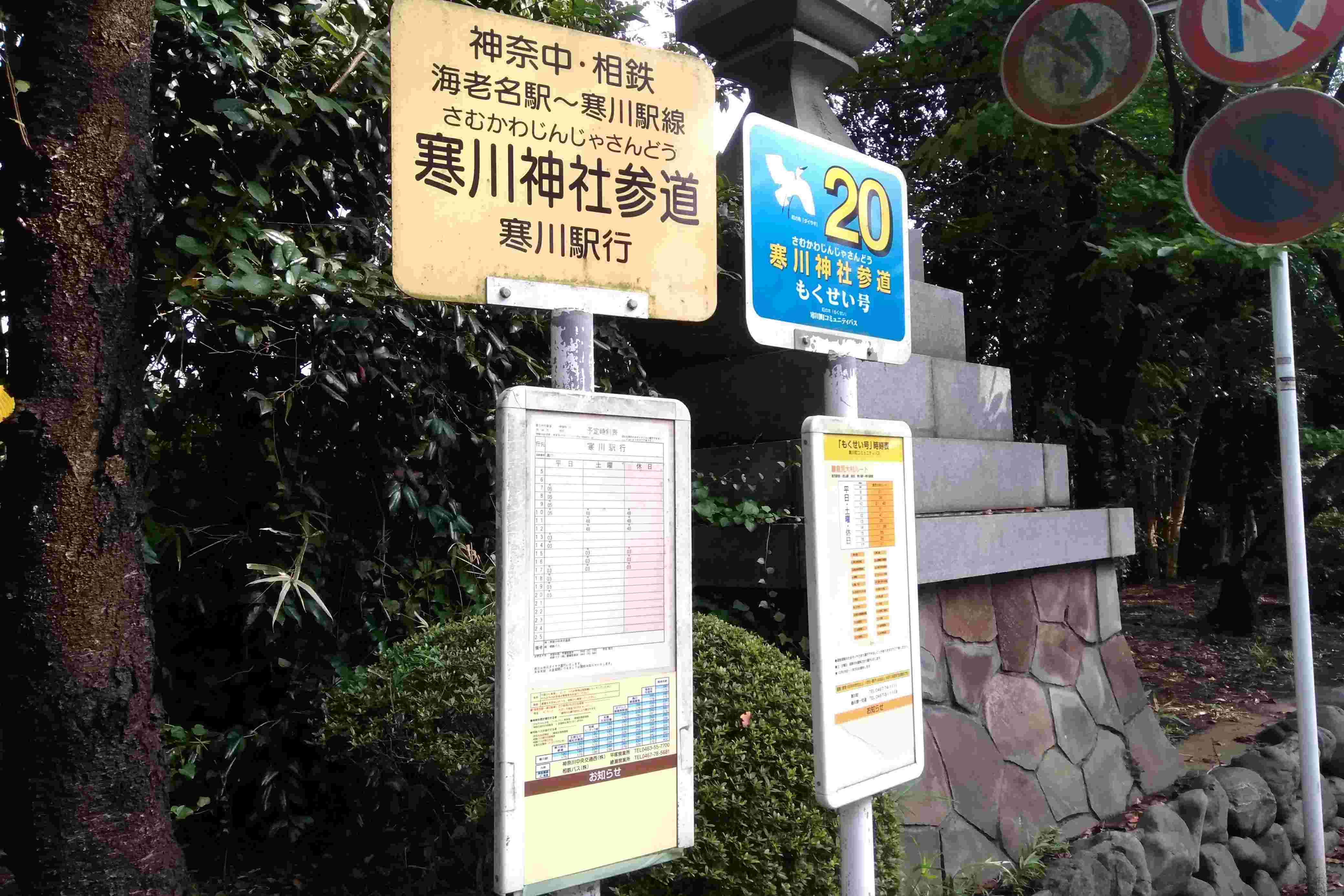
|
| Samukawa Shrine | "Samukawa Shrine entrance load" bus stop |
After that, I walked the approach to Samukawa shrine to the Samukawa area. Then, I decided to get on the bus from "Samukawa post office" stop.
The bus arrived several minutes late and I got on. The bus is operated by Kanachu and used a small bus. It already had seven passengers.

|
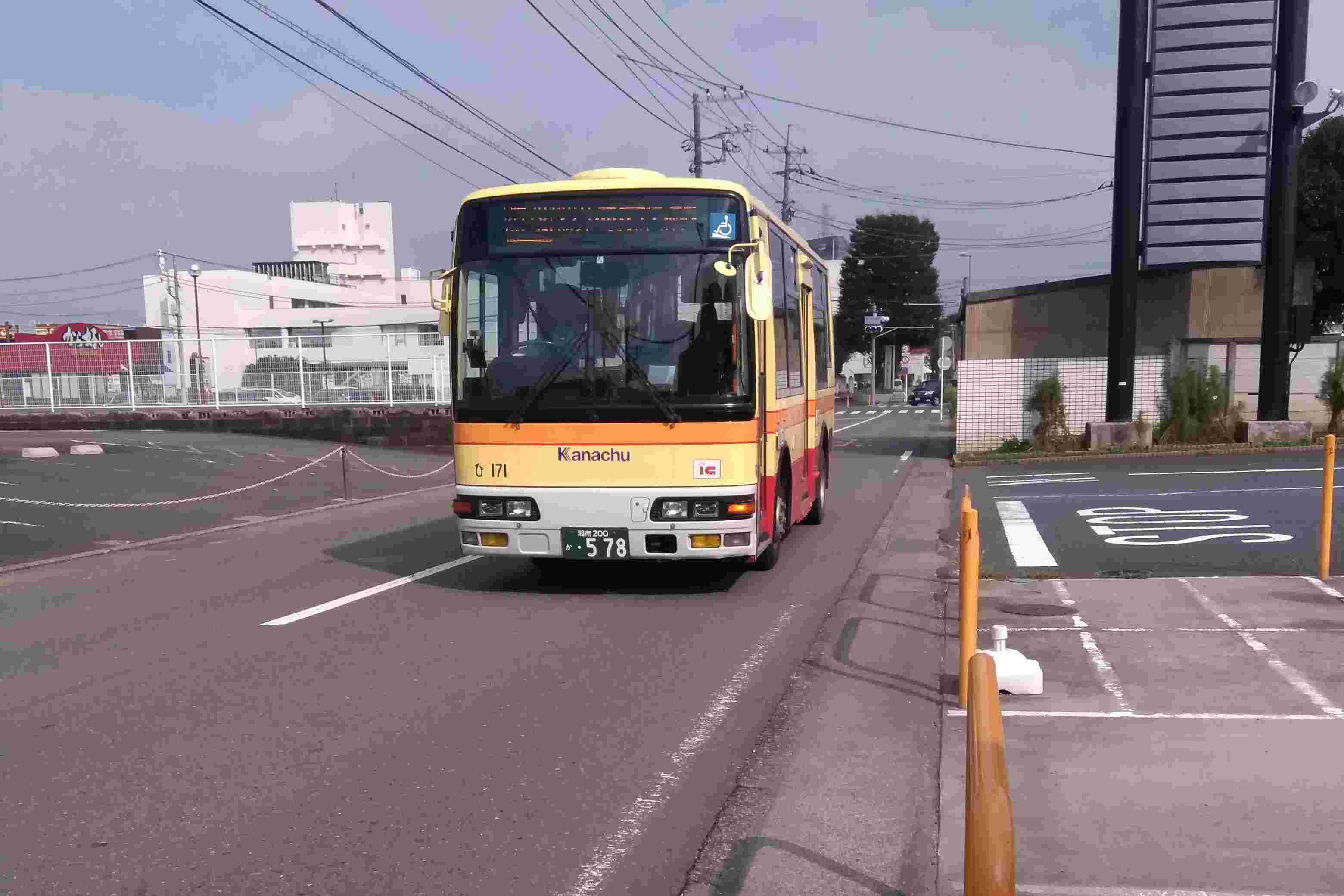
|
| "In front of Samukawa post office" bus stop | The bus I got on |
It was also far from the Sagami line station and it proceeded through the area without other bus lines. There was not a narrow section (a section where the road width is narrow) and there were some areas where made a detour and passengers were picked up.
Also, about 5 passengers replaced on the way and I arrived at Ebina station.
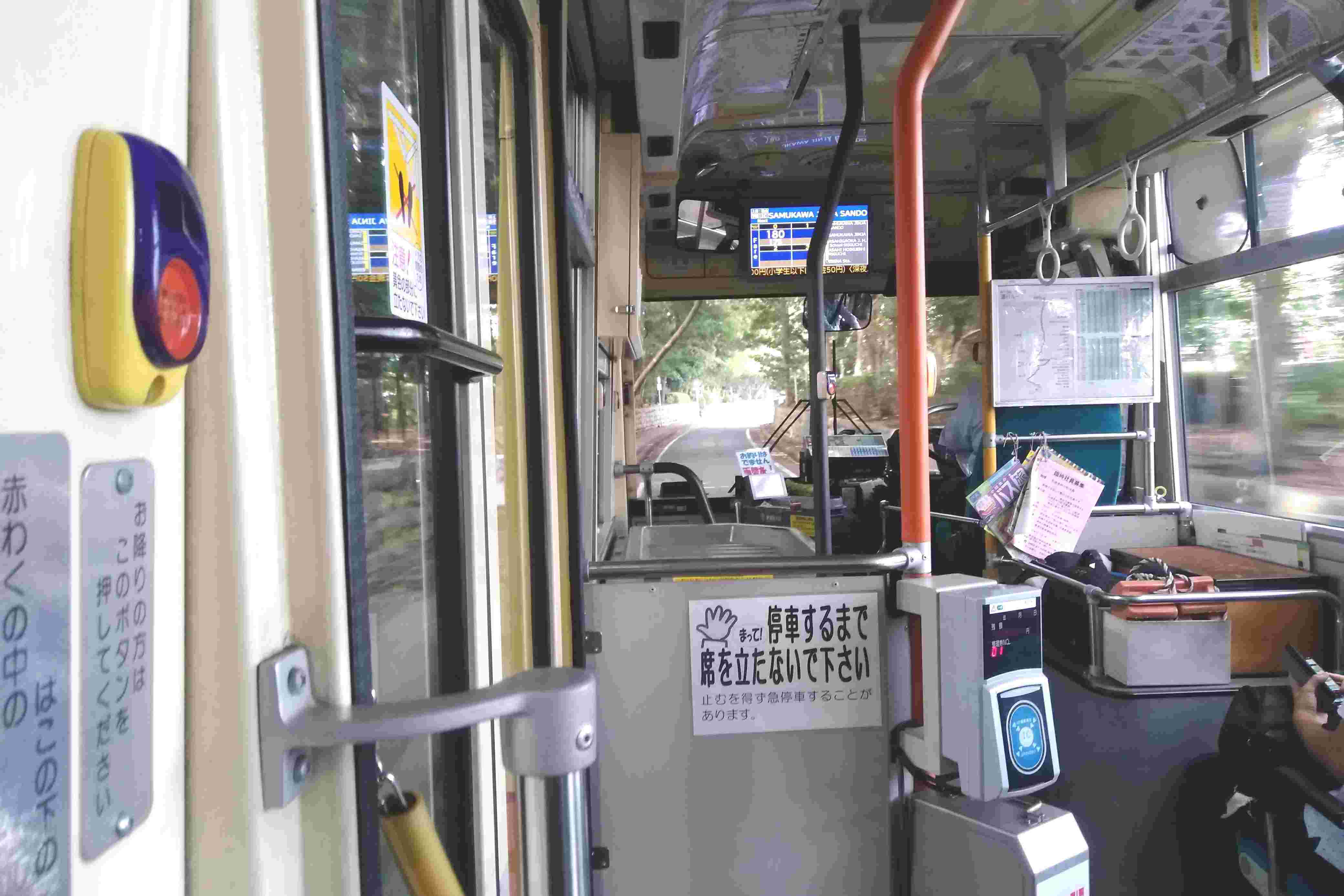
|
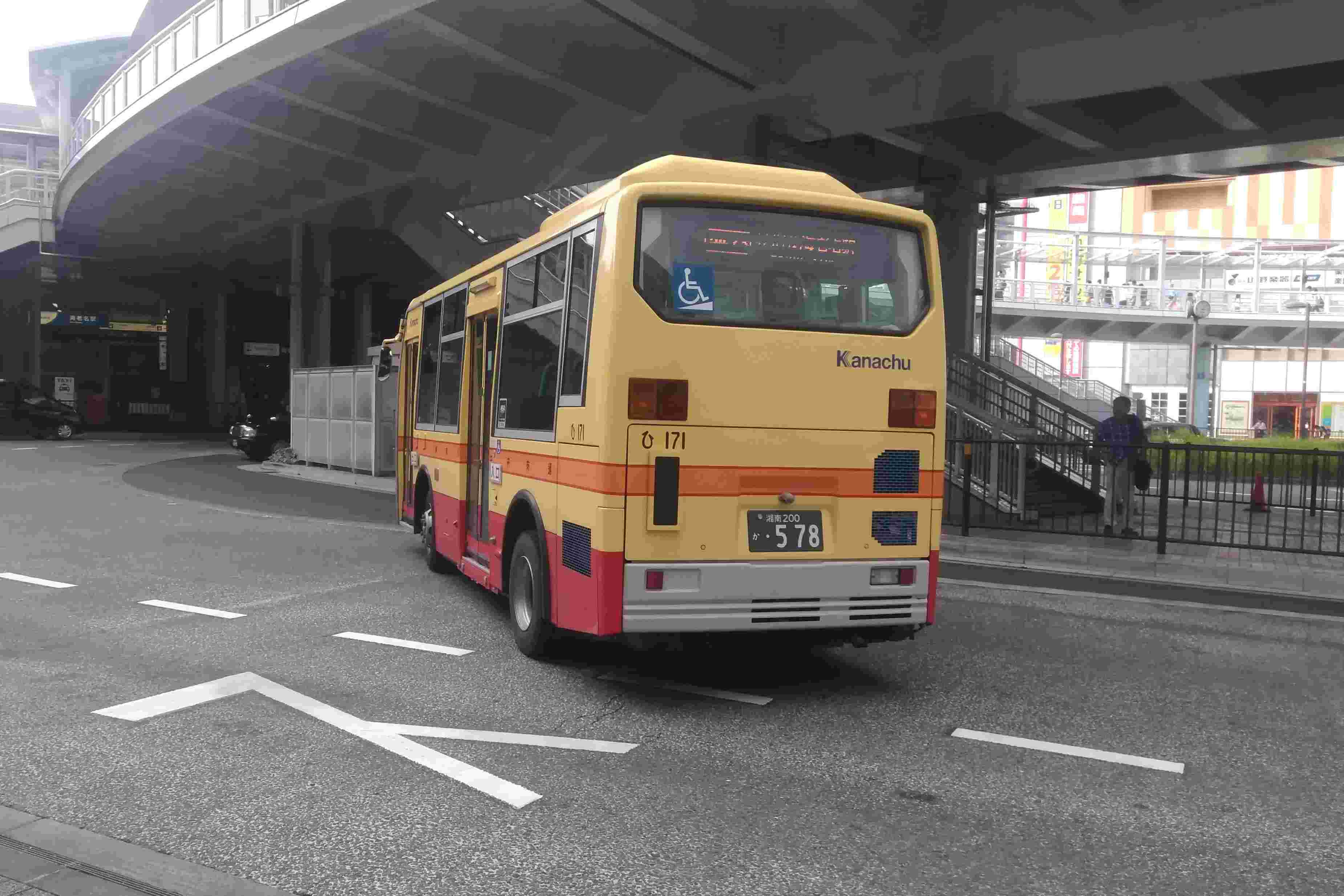
|
| Inside the car | After arriving at Ebina station |
The fare was 400 yen (cash · IC same price) from “In front of Samukawa post office” to Ebina station. Considering the Sagami line costs 200 yen (Miyama → Ebina · IC 195 yen), it is a slightly higher fare setting because it is a distance system.
Consideration
This "Ebina ~ Samukawa Line" is effective as a model case where two municipalities cooperated and established a convenient route crossing the municipality. Moreover, the usage circumstance is not bad, so we can expect that operation will be continued.
However, it can be thought that there are still many improvements.
First, it cannot pick up sightseeing and visiting demand for Samukawa Shrine successfully.
This "Ebina ~ Samukawa line" is a public transportation which departures and arrives at the nearest place to Samukawa shrine.
However, there was no description of this bus on the official site of Samukawa shrine and no noticeable display or advertisement at the bus stop which indicate that it can access to Samukawa shrine.
Therefore, it should incorporate transportation demand of Sawamura Shrine and clearly stating the fare and required time to Samukawa Shrine at the bus stop.
Next, people cannot use a commuter pass. Currently, since the operation is divided into two companies, the commuter passes of Kanachu are not sold and the commuter pass of Sotetsu bus is only a monetary commuter pass that is common to all lines.
Normally, "joint commuter pass" which can ride any companies’ bus by joint operation of several companies like this is released, but it does not be sold in this line. Therefore, it is not realistic to use this line with a commuter pass.
Actually, the discount rate of the bus commuter pass in the Kanto region is low, so it is difficult to get return if people use commuter pass on Saturdays and Sundays, so the fare does not change so much. However, it does not set up a common commuter ticket. The fact may show that this route is considered only to extend of the community bus.
By releasing a commuter pass, people who have to go to the school on Saturdays and Sundays because of club activities will have to pay less fare and the hurdles of riding on the bus will be lower.
As long as they are finding the way of profitable routes, they should set up a commuter pass so that people can use easily on a daily basis.
By taking these measures above, we can consider that it is possible to increase the number of passengers and to increase the size from a small bus to a medium size bus.


